Happy New Year!
If you’re reading this, it means that you’ve survived 2020 and made it to a whole new year! I know that the current situation doesn’t really pay attention to arbitrary calendar divisions, but there’s a reason why we celebrate birthdays and anniversaries. If you haven’t done so yet, take some time to reflect on 2020 and tink about what you’d like to accomplish in 2021. Global Nerdy is here to help the people in the Tampa Bay tech scene meet their goals!
Sad new Meetup! (Or: Why this list even more useful than ever)
Over the holidays, Meetup.com changed their home page format, and it’s now even harder to find out what’s going on this week.
To see what I mean, go to Meetup.com and try to see what’s happening in Tampa this week. You’ll see something like this:
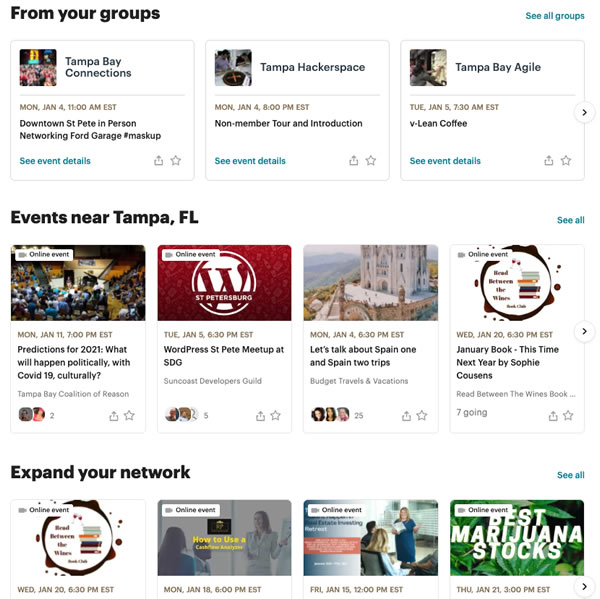
Events for any groups that you belong to will still be listed in chronological order. But everything else? It’ll be a mish-mash, with an event scheduled for next week followed by one taking place tomorrow, and all of them subdivided into sections to maximize your clicking and viewing pages instead of finding events.
This sort of mess is why I made this weekly list in the first place. Between our geographical spread, our limited time, and the pandemic, it was already hard enough to find tech, entrepreneur, and nerd events in Tampa Bay. Meetup’s new home page makes things worse. This list is meant not only to fix that problem, but to help facilitate Tampa Bay tech gatherings and help grow our scene.
Casting a wider net
I’ve tweaked the list a little — you’ll see that it now covers events within 100 miles of Tampa Bay, which includes some Orlando-based events. Howdy, neighbors!
I’m still listing only online events for the time being
I’m tired of the “new normal”, and I’m sure you are as well. But we’re not out of trouble yet:
- 1 in 16 Americans has been infected with COVID-19 (20.5 million cases as of Sunday, January 3, out of a total population of 328.2 million).
- 1 in 1000 Americans has died from COVID-19 (350,000 deaths as of Sunday, January 3, out of a total population of 328.2 million).
- 1 in 16 Floridians has been infected with COVID-19 (1.35 million cases as of Sunday, January 3, out of a total population of 21.48 million).
- 1 in 980 Floridians has died from COVID-19 (21,889 deaths as of Sunday, January 3, out of a total population of 21.48 million).
These numbers, coupled with the recent holidays — where a lot of people threw precautions to the wind — are why I’m doing my part and not promoting any in-person events just yet.
This list covers events from Monday, January 4 through Sunday, January 10, 2020.
Events — especially virtual, online ones — can pop up at the last minute. I add them to the list as I find out about them. Come back and check this article from time to time, as you might find a new listing that wasn’t there before!
This week’s events
Monday, January 4
- Tampa Drones Meetup — Part 107 Prep Class – Live Instructor Training (Online) @ 9:00 AM to 3:00 PM EST
- Professional Business Networking with RGAnetwork.net — RGA Top Professional Business Networking Tampa Bay & surrounding areas~ @ 11:30 AM to 1:00 PM EST
- Tampa Bay Investors & Traders — Stocktwits Meetups — Winning Wall Streets Money with Stocks, Futures, Options, Forex, Cryptocurrency @ 1:00 PM to 3:00 PM EST
- Toastmasters District 48 — Happy New You! Let’s welcome 2021 together by embracing our future possibilites! @ 7:00 PM to 8:15 PM EST
- Nerdbrew Events — Anime Watch Party @ 7:00 PM to 10:00 PM EST
- Thinkful Tampa | Careers in Tech — Thinkful Webinar | UX/UI Design: Designing A UX Case Study @ 8:00 PM to 10:00 PM EST
Tuesday, January 5
- Tampa Bay Agile — v-Lean Coffee @ 7:30 AM to 8:30 AM EST
- Young Professionals of Tampa Bay Networking Group — Carrolwood Networking Breakfast @ 7:30 AM to 9:00 AM EST
- Professional Business Networking with RGAnetwork.net — Downtown St Pete Networking Virtually JOIN us @ 7:30 AM to 9:00 AM EST
- LWR Exclusive — LWR EXCLUSIVE @ 9:00 AM to 10:00 AM EST
- Tampa Bay Investors & Traders — Stocktwits Meetups — Winning Wall Streets Money with Stocks, Futures, Options, Forex, Cryptocurrency @ 6:00 PM to 8:00 PM EST
- WordPress St. Petersburg — The Year from Hell 2020: Annual Year-End Review @ 6:30 PM to 8:30 PM EST
- West Pasco Toastmasters Club #2824 — Weekly Meeting @ 6:30 PM to 8:00 PM EST
- Tampa Hackerspace — THS Member Meeting Online @ 7:00 PM to 8:00 PM EST
- MakerFX Makerspace — Intro to 3D Printing at MakerFX @ 7:00 PM to 9:00 PM EST
- Brandon Boardgamers — Board Gaming – ONLINE ONLY @ 7:00 PM to 9:00 PM EST
- Shut Up & Write!® Tampa — Online Event: Shut Up & Write on Zoom @ 7:45 PM to 9:15 PM EST
Wednesday, January 6
- 1 Million Cups Orlando — Mark Masters Comedy @ 9:00 AM
- 1 Million Cups St. Pete @ 9:00 AM
- 1 Million Cups Tampa — 813 Mobile Services / RoboCash @ 9:00 AM
- North Tampa Networking Group — Business networking @ 9:00 AM to 10:00 AM EST
- Computer Coach Training Center — Training & Grant Information Session – Upskilling for Career Success @ 10:00 AM to 11:00 AM
- Suncoast Credit Union Micro Enterprise Development Meetup — Suncoast Coffee Chat: Suncoast Micro Enterprise Development Program @ 10:00 AM to 11:00 AM EST
- Young Professionals of Tampa Bay Networking Group — Wesley Chapel Networking Lunch Virtual @ 11:30 AM to 1:00 PM EST
- Professional Business Networking with RGAnetwork.net — RGA Top Professional Business Networking Tampa Bay & surrounding areas~ @ 11:30 AM to 1:00 PM EST
- Wesley Chapel Young Entrepreneurs Meetup (40 and Under) — Virtual Networking Lunch @ 11:30 AM to 1:00 PM EST
- Wesley Chapel, Trinity, New Tampa Business Professionals — Lutz, Wesley Chapel, New Tampa Virtual Networking Lunch @ 11:30 AM to 1:00 PM EST
- Heart of Agile St. Pete – Tampa – Orlando — Heart of Agile Weekly Coffee Corner @ 12:30 PM to 1:45 PM EST
- Free Video Production Classes – TV/Internet — Digital Video Editing Class (ONLINE CLASS) -FREE for Hillsborough residents only @ 1:00 PM to 3:00 PM EST
- Tampa Hackerspace — Girls Who Code Club @ 6:00 PM to 8:00 PM EST
- Tampa Bay Agile — Scrum Master Guild- Growing Your Scrum Skills in 2021 @ 6:00 PM to 8:00 PM EST
- Tampa Bay Investors & Traders — Stocktwits Meetups — Winning Wall Streets Money with Stocks, Futures, Options, Forex, Cryptocurrency @ 6:00 PM to 8:00 PM EST
- Orlando Adventurer’s Guild — Adventuring 331: Journies to the Beyond (Tier 3, APL 11) Historic Campaign @ 6:00 PM to 10:00 PM EST
- WordPress Tampa — To be announced: Scheduled Talk @ 6:30 PM to 8:00 PM EST
- Central Florida eCommerce Group — We are ONLINE SELLERS.Amazon,eBay. Let’s talk Different eCommerce Businesses @ 6:45 PM to 9:00 PM EST
- MakerFX Makerspace — Orlando 3D Printing Meetup @ 7:00 PM to 9:00 PM EST
- Central Florida AD&D (1st ed.) Grognards Guild — New Beginnings & Old Rivalries @ 7:00 PM to 10:30 PM EST
- Toastmasters District 48 — Carrollwood Toastmasters Meetings now conducted Online using Zoom @ 7:00 PM to 8:30 PM EST
- Orlando 3D Printing Meetup — 1st Wednesdays: 3D Printing Latest Developments + Show & Tell ! @ 7:00 PM to 9:00 PM EST
- Thinkful Tampa | Careers in Tech — Thinkful Webinar | Intro to Data Analytics: SQL Fundamentals @ 8:00 PM to 10:00 PM EST
- Nerdbrew Events — Sarah’s Arts Crafts and Bad TV Hangout Night @ 8:00 PM to midnight
Thursday, January 7
- Tampa Bay Connections — Business over Breakfast Tampa Bay @ 7:30 AM to 9:00 AM EST
- Professional Business Networking with RGAnetwork.net — Downtown St Pete Networking Virtually JOIN us @ 7:30 AM to 9:00 AM EST
- SRQ Exclusive — SRQ Exclusive @ 9:00 AM to 10:00 AM EST
- Toastmasters District 48 — TAMPA NOONSHINERS Toastmasters Club – Join us on Thursdays at Noon on Zoom @ 12:00 PM to 1:00 PM EST
- Free Video Production Classes – TV/Internet — YouTube Basics (ONLINE CLASS) – FREE for Hillsborough County Residents @ 3:00 PM to 4:00 PM EST
- Professional Business Networking with RGAnetwork.net — Virtual Speed Networking Thursday 5pm to 7pm ~ BYOB Connect & Collaborate @ 5:00 PM to 7:00 PM EST
- Tampa Bay Investors & Traders — Stocktwits Meetups — Winning Wall Streets Money with Stocks, Futures, Options, Forex, Cryptocurrency @ 6:00 PM to 8:00 PM EST
- Drupal User Group of Tampa Bay — Drupal Live Forum / Q&A @ 7:00 PM to 8:30 PM EST
- ONETUG – Orlando .NET User Group — Jan 7 2021- Christos Matskas: Introduction to Microsoft Identity for developers @ 7:00 PM to 9:00 PM EST
- Tampa Bay Coalition of Reason — Disparities in the Midst of COVID-19: Education, Health, and Race @ 7:00 PM to 8:30 PM EST
- Brandon Boardgamers — Board Gaming – ONLINE ONLY @ 7:00 PM to 9:00 PM EST
- Science Fiction/Fantasy Virtual Orlando Meetup for Writers — Science Fiction/Fantasy Virtual Orlando Meetup for Writers @ 7:30 PM to 8:30 PM EST
- Virtual Orlando Crypto-Growing for Newbies Club — Start Growing Crypto Today Safely Without Risk! @ 8:30 PM to 10:30 PM EST
Friday, January 8
- Winter Park Toastmasters – Learn while having FUN! — Improve your communication, listening, and leadership skills @ 7:15 AM to 9:00 AM EST
- Tampa Bay Agile — Lean Coffee for All Things Agile *ONLIVE EVENT* (formerly Waters Location) @ 7:30 AM to 8:30 AM EST
- Agile Orlando — Lean Coffee Orlando (Virtual MCO) @ 7:30 AM to 8:30 AM EST
- Elevated for Success Women’s Networking Group — Connect and Chat – Roundtable Mastermind @ 9:00 AM to 11:00 AM EST
- Speaking and Presentation Skills Success — How to Create a Niche @ 11:30 AM to 1:00 PM EST
- Wesley Chapel, Trinity, New Tampa Business Professionals — Odessa Networking Lunch Virtually @ 11:30 AM to 1:00 PM EST
- Tampa Bay Connections — Tampa International Networking Lunch Virtual @ 11:30 AM to 1:00 PM EST
- Professional Business Networking with RGAnetwork.net — RGA Top Professional Business Networking Tampa Bay & surrounding areas~ @ 11:30 AM to 1:00 PM EST
- Wesley Chapel Young Entrepreneurs Meetup (40 and Under) — Business Networking Lunch Every FridayVirtually @ 11:30 AM to 1:00 PM EST
- USA Windows Virtual Desktop User Group — USAWVDUG: January Meetup @ 12:00 PM to 2:00 PM EST
- Tampa Bay Investors & Traders — Stocktwits Meetups — Winning Wall Streets Money with Stocks, Futures, Options, Forex, Cryptocurrency @ 12:00 PM to 2:00 PM EST
- IIBA Tampa Bay — Lunch & Learn Series #20: Data Storytelling EZ: Graphs, Charts and Diagrams @ 12:00 PM to 1:00 PM EST
- Kajabi Users Meetup — Building Your Website With Kajabi Pages @ 3:00 PM to 5:00 PM EST
- MakerFX Makerspace — Virtual Open Make – Friday Nights @ 5:30 PM to 8:30 PM EST
- Toastmasters District 48 — Positively Speaking Toastmasters @ 6:15 PM to 7:45 PM EST
- Oviedo Middle Aged Gamers (OMAG) — Tabletop: Friday Board Game Night @ 7:00 PM to 11:59 PM EST
Saturday, January 9
- Pinellas Writers — Critiquing Session: Read Your Work Aloud To Receive Advice & Suggestions @ 9:30 AM to 12:00 PM EST
- Creative Writing in our Chaotic World — Our initial Zoom meeting @ 12:00 PM to 1:00 PM EST
- Tampa Bay Investors & Traders — Stocktwits Meetups — Winning Wall Streets Money with Stocks, Futures, Options, Forex, Cryptocurrency @ 12:00 PM to 2:00 PM EST
- Bitcoin Orlando — Monthly Bitcoin: Q and A @ 4:30 PM to 5:30 PM EST
- Orlando Adventurer’s Guild — OAG Dungeon of the Mad Mage Lvl#1 -“Dungeon Level”- DM Doug (Session 2) @ 6:00 PM to 10:00 PM EST
- Board Games and Card Games in Sarasota & Bradenton — Online Meetup: Terraforming Mars @ 7:00 PM to 10:00 PM EST
Sunday, January 10
- Shut Up & Write!® St. Petersburg — Shut Up & Write! 1-10-21 @ 9:00 AM to 10:00 AM EST
- Tampa Bay Investors & Traders — Stocktwits Meetups — Winning Wall Streets Money with Stocks, Futures, Options, Forex, Cryptocurrency @ 1:00 PM to 3:00 PM EST
- Central Florida Computer Society — Join us for the Windows Special Interest Group @ 1:30 PM to 3:30 PM EST
- Stone Hill — Stone Hill Monthly Virtual Meeting @ 3:00 PM to 5:00 PM EST
- The New Normal Book Club – Orlando — NO ONE IS COMING TO SAVE US by Stephanie Powell Watts @ 2:00 PM to 3:30 PM EST
- Tampa Bay YA/Adults Fantasy Book Club — January Meeting @ 3:00 PM to 4:00 PM EST
- Orlando Adventurer’s Guild — Rime of the Frostmaiden – DM Ryan (APL 1) @ 8:00 PM to 11:00 PM EST
Do you have any events or announcements that you’d like to see on this list?
Let me know at joey@joeydevilla.com!
Join the mailing list!
If you’d like to get this list in your email inbox every week, enter your email address below. You’ll only be emailed once a week, and the email will contain this list, plus links to any interesting news, upcoming events, and tech articles.
Join the Tampa Bay Tech Events list and always be informed of what’s coming up in Tampa Bay!

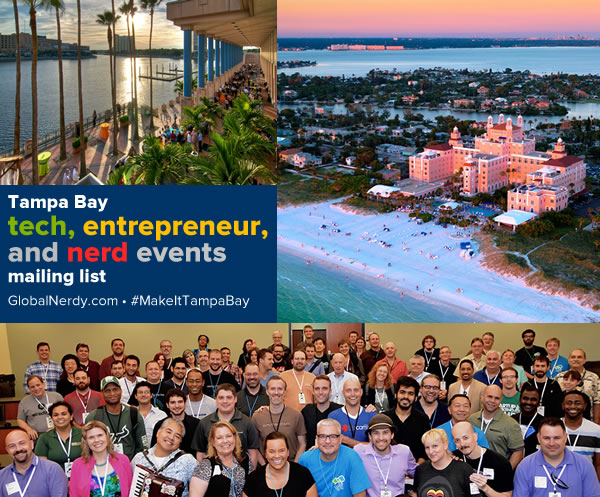
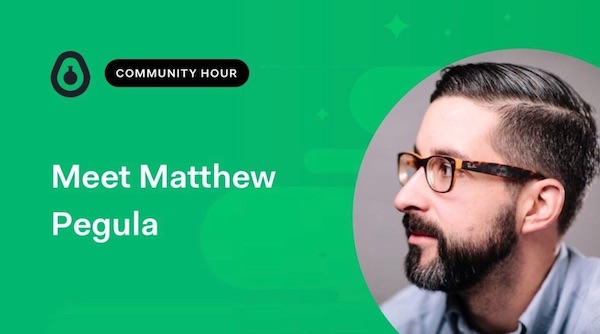
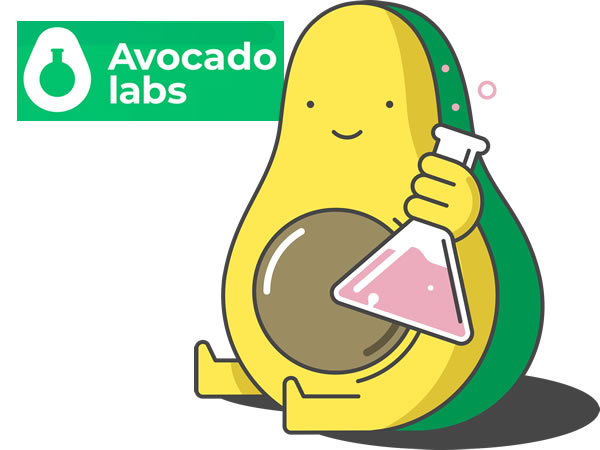 Avocado Labs
Avocado Labs
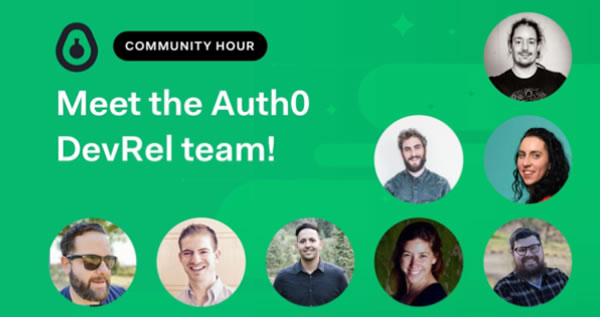






 Kristy is a Project Manager at Auth0. New to working in the tech world, Kristy’s background is rooted in outdoor education and international adventure travel. While working at Auth0 may sound like an odd fit at first, Kristy thrives on managing complex logistics, organizing information, and solving problems. She finds the behind-the-scenes work of building more efficient processes for things like our ambassador program and events very familiar turf. When she’s not tidying up her to-do list, she loves to cook, kayak, and mountain bike.
Kristy is a Project Manager at Auth0. New to working in the tech world, Kristy’s background is rooted in outdoor education and international adventure travel. While working at Auth0 may sound like an odd fit at first, Kristy thrives on managing complex logistics, organizing information, and solving problems. She finds the behind-the-scenes work of building more efficient processes for things like our ambassador program and events very familiar turf. When she’s not tidying up her to-do list, she loves to cook, kayak, and mountain bike.

